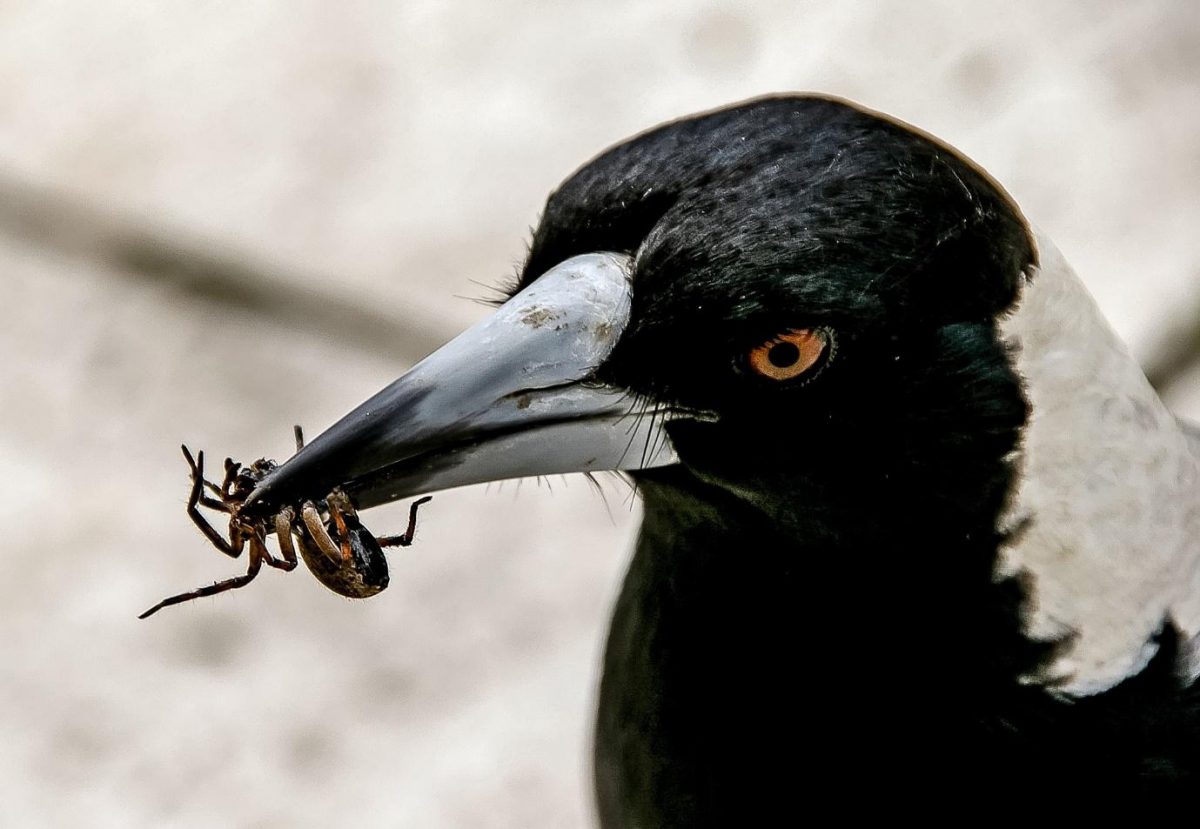What do magpies eat?

Magpies are wonderful Australian natives, and you might see them stopping by your garden to say hello and peck at the grass.
These birds get a bit of a bad rep, particularly around this time of year. While you may be giving all magpies the side-eye in Autumn, the truth is that only around 8-10% of magpies swoop. Still, it may have you asking the question: can you befriend a magpie?
Food is one way to win an animal over. So, what do magpies eat and is it ok to feed magpies? Read on to learn more.
What do Australian magpies eat?
Just what do magpies eat in the wild? Out in the wild, magpies have a fairly diverse diet. They love to chow down on small lizards, worms, frogs, and grain. These birds also enjoy eating scarab beetles, which is great news for your lawn. Magpies like to forage, which is why you’ll often see them pecking at the dirt, looking for food.
What do baby magpies eat?
Magpies don’t swoop just for the fun of it. They swoop to protect their young from what they perceive to be threats. Like many birds in the animal kingdom, magpie babies are brought insects from their parents. The adult magpies bring these insects home to the nest for the babies to eat. Once they’re out of the nest, you’ll likely see the young foraging about with their parents, as they’re taught how to feed themselves.
Is it alright to feed magpies in your garden?

While it may be tempting to throw your bread scraps to the magpies in your garden, this is generally a bad idea. Bread lacks nutrients and can be harmful to a magpie’s delicate stomach. You may also want to throw them meat scraps, but this is also a bit of a bad option. Raw meat can expose them to parasites, and mince contains large amounts of phosphate.
When it comes to what to feed magpies at home, it’s best to interfere with their natural diet as little as possible. As such, if you’d really like to give the magpies a treat, try collecting bugs and worms from your garden to feed them, or purchase crickets from your local pet store.
One way to feed magpies and complete a fun little project at the same time is by building a foraging tray. This can be filled with a variety of different natural debris, along with bugs for the birds to dig out.
How to build a foraging tray
As mentioned, a foraging tray is a fun way to provide magpies with food, as well as give them a little stimulation. Here’s how you can make your own foraging tray.
Step 1: Find your tray
The first thing to do when building a foraging tray is to find a tray. A cat little tray is an affordable option, but any shallow container can work. It should be able to fit a magpie in, as this allows them to really get amongst it and forage for food more easily.
Step 2: Collect your organic materials
A wide variety of organic materials can be placed into your foraging tray. This can include grass, stones, leaves, dirt and sticks. These items should be easy to move about and dig through, allowing birds to access the tasty treats you’ve hidden.
Step 3: Source bugs and worms
Finding bugs is the next step. You might like to hunt about your garden to turn up small bugs and worms to include. Overturn bricks and logs to find slaters and millipedes to add to the tray. Can’t find enough bugs in your garden to add to it? Purchase some crickets or mealworms from your local pet shop.
Step 4: Put it all together
Once you’ve sourced your debris and insects, you can add it all together to create a fun foraging tray for the magpies. If you have the time, you may even like to create two or three trays, so the birds can have a variety to choose from.
Step 5: Place it in a good spot
Now the tray is completed, it’s time to place it in the perfect spot. Make sure to put it in an area where the birds already frequent, as this will make it more likely they’ll use it. A good spot might be near a water source, or in some bushes where the magpies often forage. If you’re unsure where to put it, try a few different locations until you find somewhere the birds seem to love.
Step 6: Sit back and watch
Now it’s time to sit back and watch the magpies enjoy their foraging tray. If you’re patient and lucky, you might even get to see the birds in action as they dig about for the bugs hidden inside. Once all the bugs have been eaten, you can simply refill the tray and enjoy watching the birds all over again.
Building a foraging tray is a great way to provide food for magpies, as well as giving them a little stimulation.
While it may be tempting to feed magpies your kitchen scraps, it’s best to stick to their natural diet. This includes insects, worms and bugs. You can either source these from your garden, or purchase them from your local pet store. We hope this article has helped you learn a little more about what magpies eat and how to provide them food in your garden.
Seeking for professional garden services and maintenance? Call us today for all your gardening needs.



